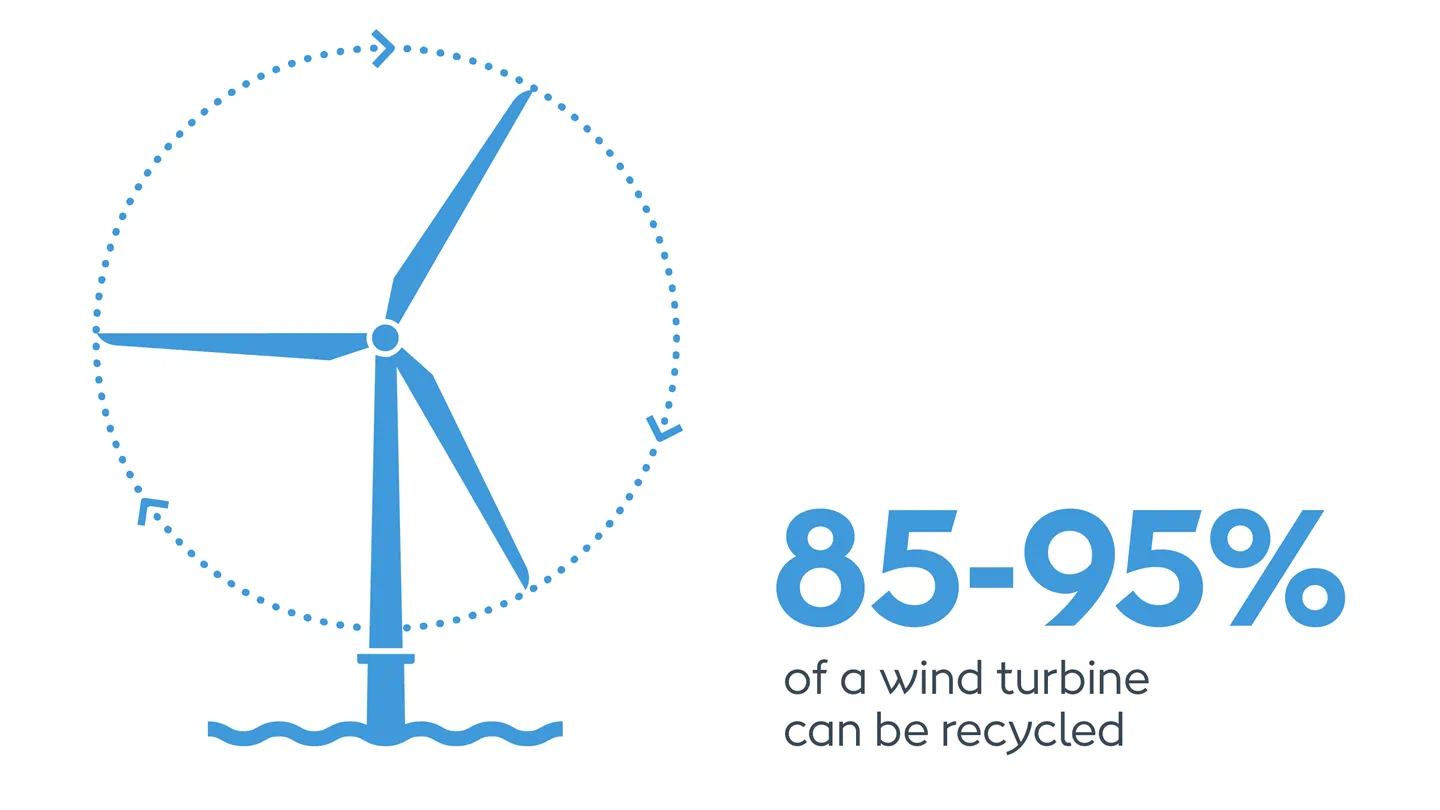Question:
Are landfill sites filling up with old wind turbines? If so, isn’t the problem only going to get worse?
Fact:
Up to 95% of a wind turbine can currently be recycled, and we’re working on the last 5%.
Question:
Are landfill sites filling up with old wind turbines? If so, isn’t the problem only going to get worse?
Fact:
Up to 95% of a wind turbine can currently be recycled, and we’re working on the last 5%.
The wind will keep blowing forever, but the turbines used to turn the wind into renewable energy do eventually wear out and need replacing. When we decommission a wind farm, we are currently able to recycle between 85 and 95% of the materials that make up the turbines – mostly steel.
The turbine blades, however, are more difficult to dispose of. They’re designed to be lightweight but highly durable, and are usually made or fiberglass or carbon fiber, held together with resin. This cannot be easily or efficiently broken down for recycling.
Nonetheless, with the one wind farm Ørsted has decommissioned so far, Vindeby in Denmark, 98% of the composite material was either recycled or used for research or exhibition, including all the turbine blades.
In June 2021, Ørsted committed never to send turbine blades to landfill, instead reusing, recycling or otherwise recovering all blades from newly decommissioned onshore and offshore wind farms.
We’re following new recycling innovations closely and working with commercial and academic partners to develop our own. If it takes longer than anticipated to find recycling solutions that are both environmentally sustainable and commercially viable, we will store any decommissioned blades temporarily to save them from landfill.

